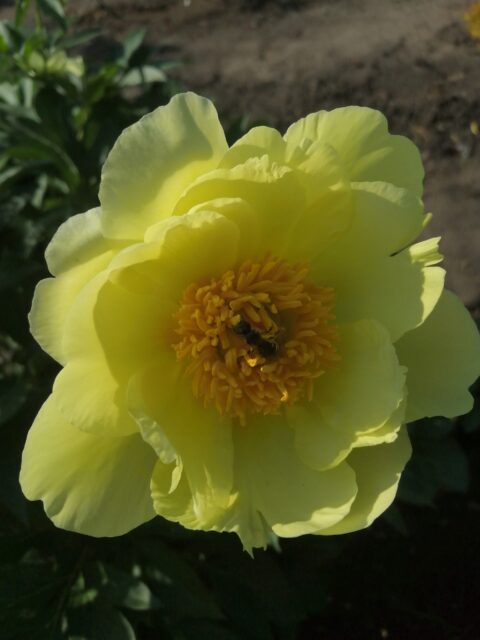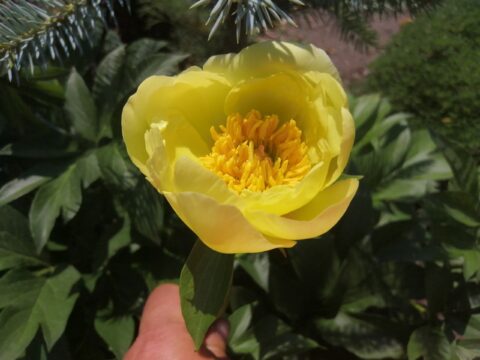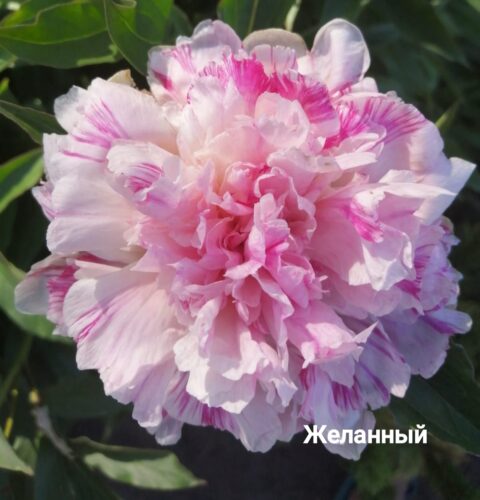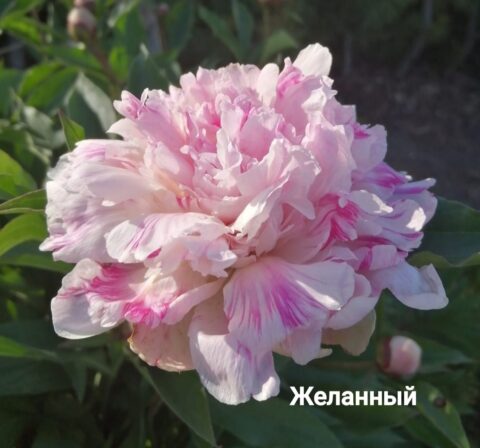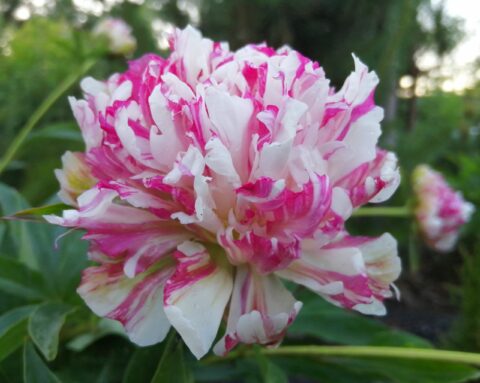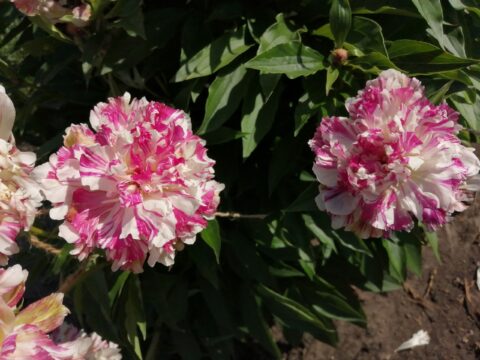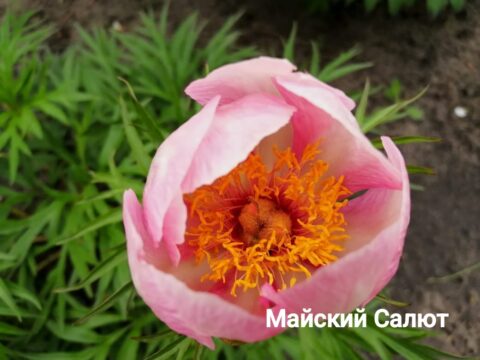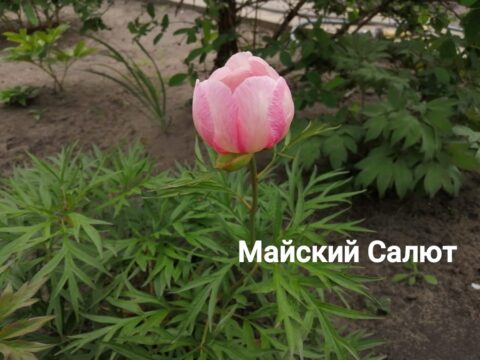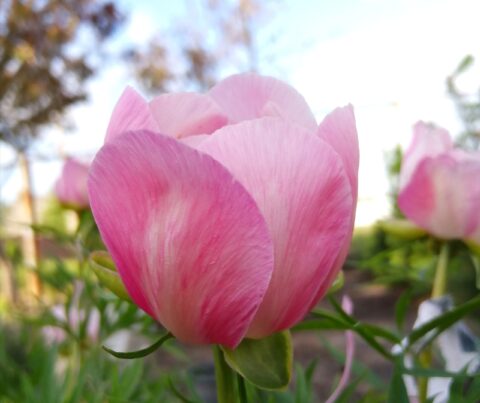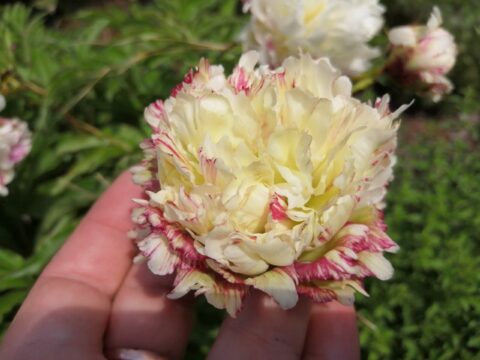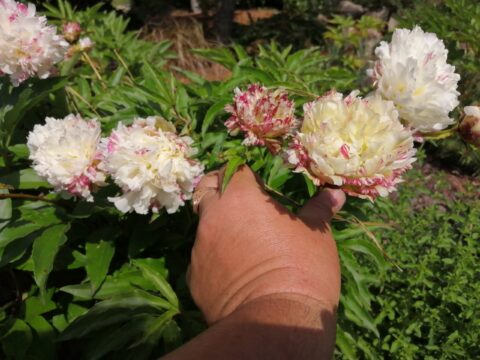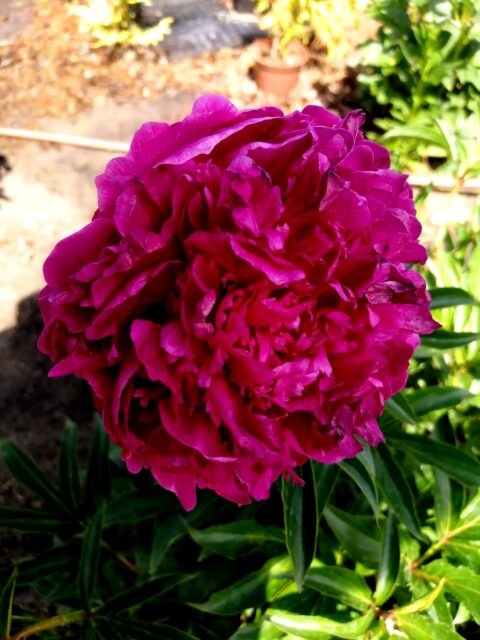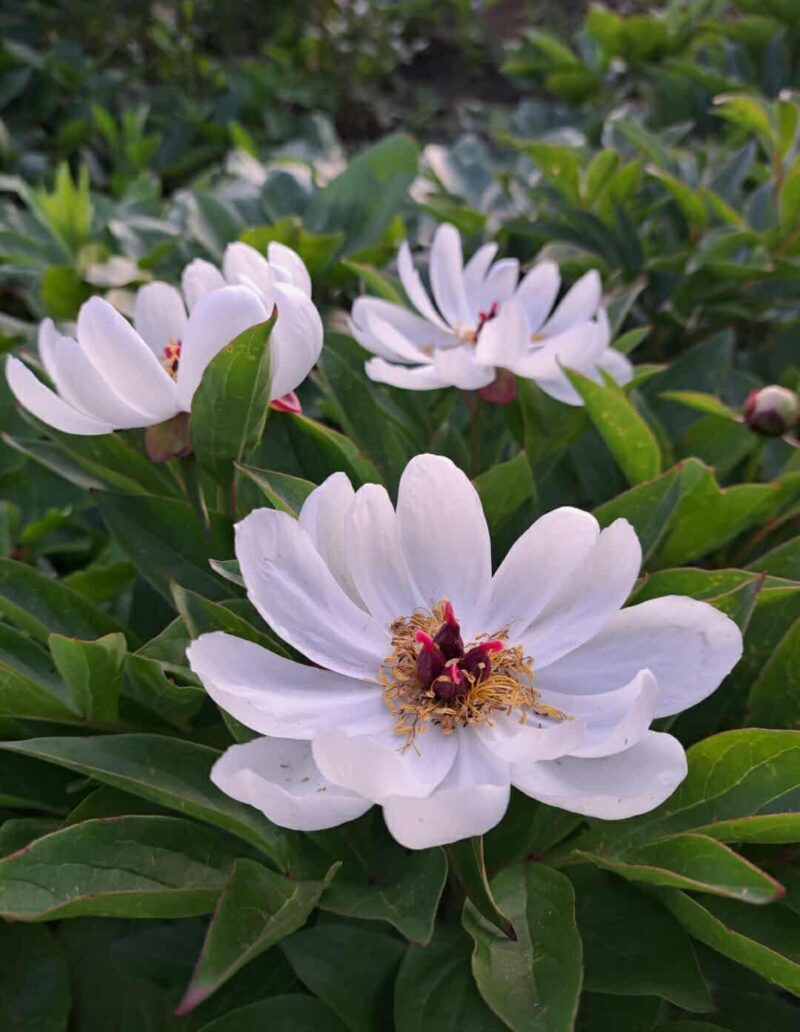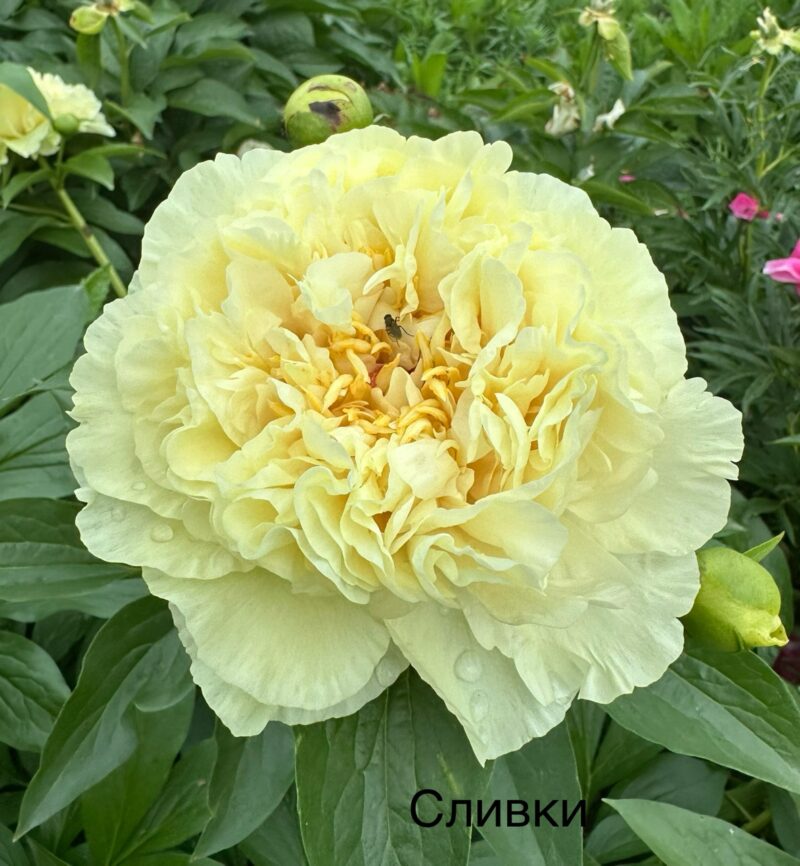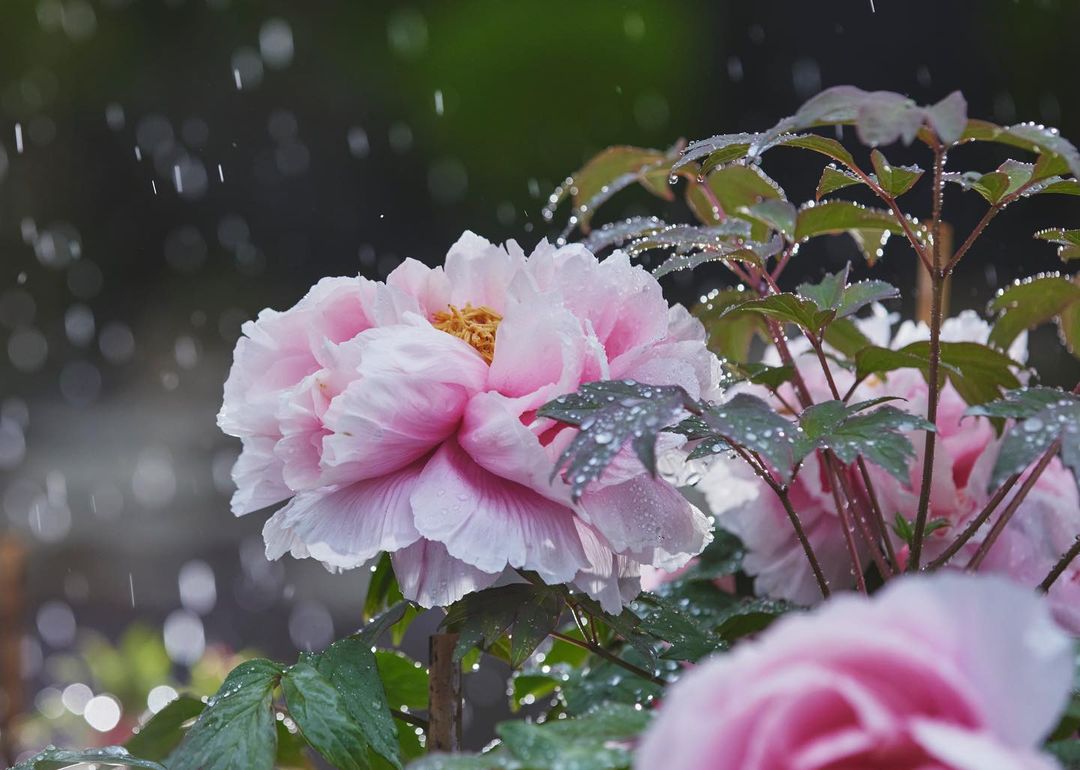Aleksej Bredikhin
Country:
Russia, Voronezh
Short biography:
I am 54 years old. I am engaged in hybridization of peonies, I have a very large collection of wild species of peonies. I work as a landscape designer.
My garden is over 25 years old, but it continues to mature, change, and get used to me. This isn’t easy, because sometimes I demand the impossible—that’s just my personality…
At 23, when the opportunity to buy a plot of land arose, I took the first one I could afford without a second thought. It was a former potato field, donated by the collective farm to a gardening community due to consistent crop failures. Although the Voronezh region is famous for its black soil, the left bank of the Don, where my plot is located, consists primarily of sand and sandy loam. Over time, it became clear that the plot is located in a lowland, attracting all the cold and recurrent frosts like a magnet.
At first, many plants categorically refused to grow on the sun-baked sand, so I had to think about creating some shade—and I really wanted to sit in a shady spot myself. Five years later, the garden’s concept changed: I began planting deciduous and coniferous trees for shade and created several ponds for my favorite aquatic plants. The garden’s microclimate changed, and I could now afford a collection of winter-hardy Gesneriads and orchids. Even the most moisture-loving and fussy plants now have a cozy spot.
Today, the garden’s main focus is on peonies (especially species), aquatic plants, as well as winter-hardy cacti and succulents—a trend that remains unexplored and requires popularization. Most Russian gardeners still find it hard to comprehend that these exotic-looking plants overwinter beautifully in temperate climates, often better than roses.
Every year, the collections are expanded, which requires me to maintain contacts with Russian and international colleagues. Over the past 15 years, I have become interested in breeding and will soon be introducing my own new varieties and hybrids of peonies, winter-hardy cacti, and Siberian squills.
More information:
- Фотон (Photon) (Bredikhin)
- Фотон (Photon) (Bredikhin)
Фотон (Photon) (Bredikhin, 2023) Intersectional backcross (Bartzella x Lemon Chiffon). The flowers are cup-shaped, three rows of petals, and may become double with age. 16-17 cm in diameter. The petals are bright yellow with a lime tint. The color is uniform, without reddish streaks at the base. The scent is pleasant, citrus-like. The carpels are yellowish, 3-5 in number, and the stigmas are pink. Fertile in both directions.
The bush is very decorative, with bright green foliage that remains attractive until late autumn. The flowering period is mid-season. Buds form only underground; no buds have ever been observed on the stems. The stems die back annually, like herbaceous peonies.
Height: 80-90 cm. Excellent as a cut flower.
- Желанный (Desired) (Bredikhin, 2018)
- Желанный (Desired) (Bredikhin, 2018)
- Желанный (Desired) (Bredikhin, 2018)
Желанный (Desired) (Bredikhin, 2018)A variety from the P. lactiflora family. Double, hemispherical. The flowers are white-pink or delicate pink with numerous small, sparse, red-crimson strokes. The flower size is 15-17 cm. There are no stamens. There are 3-5 greenish carpels, and the stigmas are pink.
This variety is fertile and produces full-fledged seeds. In some years, pistils are completely absent.
Height: 100-110 cm. The bush is tall and requires staking. The flowering period is average. It has a rose scent. There are no lateral buds, but a few may appear on mature bushes.
- Жостовская Роспись (Zhostovo Painting) (Bredikhin)
- Жостовская Роспись (Zhostovo Painting) (Bredikhin)
- Жостовская Роспись (Zhostovo Painting) (Bredikhin)
Жостовская Роспись (Zhostovo Painting) (Bredikhin, 2020). Lactiflora (Twitterpated x Green Lotus) x Gold Mine. The flower is bomb-shaped, densely double, with red-crimson strokes scattered densely over a white background. The color is stable, and the density of the strokes is always uniform. The flower diameter is up to 15 cm. It may be larger in more fertile soil. There is no scent. There are 2-5 carpels, which are bare and yellowish in color, and the stigmas are bright crimson. Lateral buds are virtually absent; mature bushes may develop a single lateral bud. The height of the bush is up to 1 m. The flowering period is medium to mid-late. However, seedlings emerge later than other lactifloras.
The stems are thin but quite strong. Special staking is not required; tying the bush with twine is sufficient. It is a good cut flower.
- Майский салют (May Fireworks) (Bredikhin)
- Майский салют (May Fireworks) (Bredikhin)
- Майский салют (May Fireworks) (Bredikhin)
Майский салют (May Fireworks) (Bredikhin, 2020) Hybrid (P. mlokosewitschii x P. tenuifolia). One of the earliest hybrids, it blooms at the same time as the tenuifolia variety. The flower is simple, cup-shaped, reminiscent of a tulip bud when half-opened. The color is soft pink, with a slight flesh tint, with a wide, blurred border of a cooler pink along the edge. The flowers fade slightly toward the end of flowering. The fragrance is pleasant. There are 2-4 carpels, which are pubescent and light green. The stigmas are pink. Fertile, setting apparently viable seeds, but germination has not yet been observed. The leaves are heavily serrated, half as thin as those of the ‘Nosegay’ variety. Height: 80-90 cm. The stems and petioles are usually brick-colored. This variety thrives in partial shade, where it retains its foliage until autumn. In the sun, the shoots die off by the end of August.
Some other varieties and seedlings created by Aleksej Bredikhin. Click to enlarge and read the name below the image.
PS: We hope to add some more information later.
E-mail of this person is known to the author. If you want to contact this hybridizer, we can forward your message.

